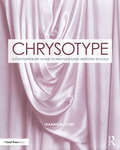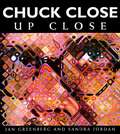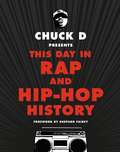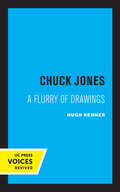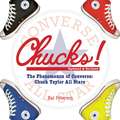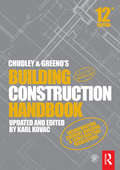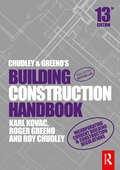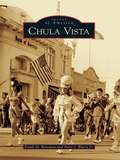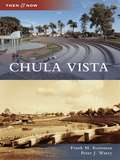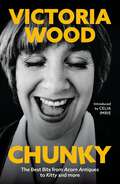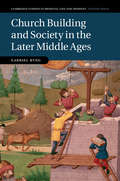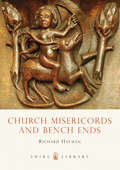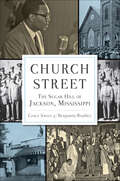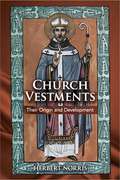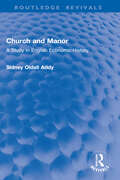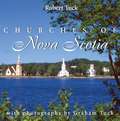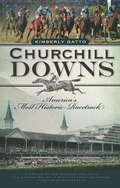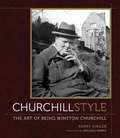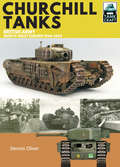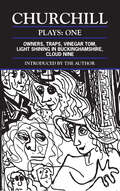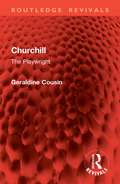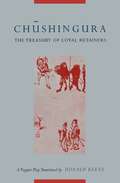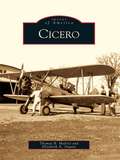- Table View
- List View
Chrysalis: Maria Sibylla Merian and the Secrets of Metamorphosis
by Kim ToddThe award-winning science and history writer “gives wings to the life of the artist/naturalist Maria Merian. A lovely and exhilarating book” (Deidre McNamer, author of Aviary).Before Darwin, before Audubon, there was Maria Sibylla Merian.An artist turned naturalist known for her botanical illustrations, Merian was born just sixteen years after Galileo proclaimed that the earth orbited the sun. But at the age of fifty, she sailed from Europe to the New World on a solo scientific expedition to study insect metamorphosis—an unheard-of journey for any naturalist at that time, much less a woman.When she returned, she produced a book that secured her reputation, only to have it savaged in the nineteenth century by scientists who disdained the work of “amateurs.”Exquisitely written and illustrated, Chrysalis takes us from golden-age Amsterdam to the Surinam tropics to modern laboratories where Merian’s insights fuel a new branch of biology. Kim Todd brings to life a seventeenth-century woman whose boldness and vision would still be exceptional today.“In this spellbinding biography, Todd interweaves the life of Maria Sibylla Merian, a German artist and naturalist who became famous in the seventeenth century for her engravings of caterpillars, with the intellectual and scientific history of metamorphosis.” —The New Yorker“Fascinating reading about a little-known, independent woman.” —Science“What makes Chrysalis such a pleasure is that our awe is guided by Merian’s discoveries. Her life was dedicated to understanding and depicting the science of transformation, yet she never lost her enchantment with what few of us could deny is also miraculous.” —Orion
Chrysotype: A Contemporary Guide to Photographic Printing in Gold (Contemporary Practices in Alternative Process Photography)
by Leanne McPheeChrysotype is about photographic printing in gold on paper. This 19th century printing process, modified for contemporary use, provides artists with an affordable way to produce permanent prints in gold. By using film or digital negatives, striking hand-coated prints can be created in monochromatic hues ranging from pink, violet, magenta and purple, to green, blue, grey and black. Chrysotype offers a how-to guide for intermediate practitioners with illustrated examples and simple explanations for each stage of the chrysotype process. The book is divided into three sections: history; preparation and how-to; and the work of contemporary artists using chrysotype. This book includes: A concise account of the invention and modification of the chrysotype process, including early discoveries about gold and colour and the significance of moisture for printing in gold How to set up your workspace for printing, including useful equipment and materials Advice on safe chemical practice A step-by-step guide to creating suitable digital and film negatives Guidance on paper selection and how to successfully coat paper An overview guide to creating a chrysotype print Step-by step directions for creating the chrysotype solutions An explanation of mixing ratios and solution volumes that control contrast An illustrated explanation of the effect of humidity on colour, including split tone colours and ways to control humidity Step-by-step directions on post-exposure hydration to lengthen tonal range and lower contrast Step-by-step tray processing directions Advanced techniques such as handling translucent papers, additional chrysotype formulas and procedures, and alternative developing agents that support longer development, colour formation and remedy problems that affect image quality Troubleshooting chrysotype printing, including advice and photographic examples Illustrated profiles of contemporary artists making chrysotype prints, including their methods and tips Chrysotype serves to inform, encourage and challenge a new generation of alternate process practitioners and a growing chrysotype community, from the newly curious to the experienced professional.
Chuck Close, Up Close
by Jan Greenberg Sandra JordanA biography of the revisionist artist who achieved prominence in the late 1960s for enormous, photographically realistic, black and white portraits of himself and his friends.
Chuck D Presents This Day in Rap and Hip-Hop History
by Chuck D Shepard FaireyA comprehensive, chronological survey of rap and hip hop from 1973 to the present by Chuck D, arguably the most influential rapper in the world.In the more than 40 years since the days of DJ Kool Herc and "Rapper's Delight," hip hop and rap have become a billion-dollar worldwide phenomenon. Yet there is no definitive history of the genre-until now.Based on Chuck's long-running show on Rapstation.com, this massive compendium details the most iconic moments and influential songs in the genre's recorded history, from Kurtis Blow's "Christmas Rappin'" to The Miseducation of Lauryn Hill to Kendrick Lamar's ground-breaking verse on "Control." Also included are key events in hip hop history, from Grandmaster Flash's first scratch through Tupac's holographic appearance at Coachella.Throughout, Chuck offers his insider's perspective on the chart toppers and show stoppers as he lived it. Illustrating the pages are more than 100 portraits from the talented artists specializing in hip hop.
Chuck Jones: A Flurry of Drawings (Portraits of American Genius #3)
by Hugh KennerCreator of the mono-maniacal Wile E. Coyote and his elusive prey, the Road Runner, Chuck Jones has won three Academy Awards and been responsible for many classics of animation featuring Bugs Bunny, Daffy Duck, Porky Pig, and Elmer Fudd. Who better to do Chuck Jones than Hugh Kenner, master wordsmith and technophile, a man especially qualified to illuminate the form of literacy that Jones so wonderfully executes in the art of character animation? A Flurry of Drawings reveals in cartoon-like sequences the irrepressible humor and profound reflection that have shaped Chuck Jones's work. Unlike Walt Disney, Jones and his fellow animators at Warner Brothers were not interested in cartoons that mimicked reality. They pursued instead the reality of the imagination, the Toon world where believability is more important than realism and movement is the ultimate aesthetic arbiter. Kenner offers both a fascinating explanation of cartoon culture and a new understanding of art's relationship to technology, criticism, freedom, and imagination. This title is part of UC Press's Voices Revived program, which commemorates University of California Press's mission to seek out and cultivate the brightest minds and give them voice, reach, and impact. Drawing on a backlist dating to 1893, Voices Revived makes high-quality, peer-reviewed scholarship accessible once again using print-on-demand technology. This title was originally published in 1994.
Chucks!: The Phenomenon of Converse: Chuck Taylor All Stars
by Hal PetersonIn this book, shoe enthusiast Hal Peterson takes an in-depth look at the history, significance, and magic of "Chucks.” Originally a rubber shoe company, Converse rolled out the canvas All Star in 1917, nicknamed ?Chucks” for the basketball hall-of-famer, Charles "Chuck” Taylor, who was a lifelong promoter. The shoe quickly became a phenomenon that has lasted for nearly a century with a fanbase that has varied greatly. Though they have a simple, classic style, the many shoes photographed here make clear that true believers always find ways to individualize their favorite footwear, even though black was the only color available for almost fifty years. Peterson explores trends in everything from lace styles to color schemes and highlights Converse’s feature that allows you to "design your own.” He also takes a look at the social importance of Chucks: appearing in sports, rock and roll, movies, and art, they are known as one of the most iconic examples of twentieth-century footwear design. What is it about this sneaker that makes it so culturally pervasive? With help from Converse-wearers, we’ll find the answers.
Chudley and Greeno's Building Construction Handbook
by Roy Chudley Roger Greeno Karl KovacThe 12th edition of Chudley and Greeno’s Building Construction Handbook remains THE authoritative reference for all construction students and professionals. The principles and processes of construction are explained with the concepts of design included where appropriate. Extensive coverage of building construction practice, techniques and regulations representing both traditional procedures and modern developments are included to provide the most comprehensive and easy to understand guide to building construction. This new edition has been updated to reflect recent changes to the building regulations, as well as new material on modern methods of construction, greater emphasis on sustainability and a new look interior. Chudley and Greeno’s Building Construction Handbook is the essential, easy-to-use resource for undergraduate and vocational students on a wide range of courses including NVQ and BTEC National, through to Higher National Certificate and Diploma, to Foundation and three-year Degree level. It is also a useful practical reference for building designers, contractors and others engaged in the construction industry.
Chudley and Greeno's Building Construction Handbook
by Roy Chudley Roger Greeno Karl KovacThe 13th edition of Chudley and Greeno’s Building Construction Handbook remains THE authoritative reference for all construction students and professionals. The principles and processes of construction are explained with the concepts of design included where appropriate. Extensive coverage of building construction practice, techniques and regulations representing both traditional procedures and modern developments are included to provide the most comprehensive and easy-to-understand guide to building construction.This new edition has been updated to reflect recent changes to the Building Regulations, as well as including new material on modern methods of construction, greater emphasis on sustainability, health and safety, and coverage of heat pumps, photovoltaics, underfloor heating and rainwater harvesting.Chudley and Greeno’s Building Construction Handbook is the essential, easy-to-use resource for undergraduate and vocational students on a wide range of courses including NVQ and BTEC National, through to Higher National Certificate and Diploma, to Foundation and three-year degree level. It is also a useful practical reference for building designers, contractors and others engaged in the construction industry.
Chula Vista (Images of America)
by Frank M. Roseman Peter J. Watry Jr.In 1868, Frank Kimball and his brothers purchased a 26,000-acre Mexican land grant rancho in the San Diego area. The area comprised the present-day communities of National City, Bonita, and the western half of Chula Vista. Kimball developed National City first and secured a branch of the Santa Fe Railway. The railroad company financed the building of nearby Sweetwater Dam, thus allowing the development of Chula Vista in 1888 as a planned agricultural community. Chula Vista remained as planned until World War II when the arrival of Rohr Aircraft Corporation caused a population boom that would continue even after the war, creating the desirable "bedroom community" that Chula Vista is today.
Chula Vista (Then and Now)
by Frank M. Roseman Peter J. WatryAfter many decades of being an agricultural community and lemon capital, an aircraft-parts manufacturer moved to Chula Vista. In 1940, Rohr Aircraft Corporation arrived and, due to the demand for workers and housing for them, the agricultural town was on its way to becoming a bedroom community. The city grew rapidly due to the development of a large ranch and the construction of 25,000 homes.
Chunky: The Best Bits from Acorn Antiques to Kitty and more
by Victoria Wood'Absolutely perfect. All Christmas presents sorted. No notes.' Sarra ManningBabs (on telephone): Acorn Antiques, can I help you? Gainsborough's Blue Boy? Yes, I think we have it in mauve, I'll just check.Flips over blank bits of paper.Yes, we do; shall I pop it under the counter for you? Not at all, bye!Chunky contains the complete scripts of Wood's beloved wobbly-walled spoof soap opera Acorn Antiques, as well as the Kitty monologues: 'My name's Kitty. I've had a boob off and I can't stomach whelks so that's me for you.'It also features daytime television presenters Margery and Joan, Susie the waspish Continuity Announcer, and the unforgettable bus stop stories of Kelly-Marie Tunstall: 'I said I'll tell everyone what happened on Christmas Eve when you drank two pints of correcting fluid and sexually harassed me with an outsize party squeaker'.Published to mark the 70th anniversary of Victoria Wood's birth, this stunning revised edition of Chunky collects the very best of Wood's sketches, shows and more featuring:NEW introduction from Celia Imrie, star of many of Victoria Wood's showsAdditions and annotations from Wood's acclaimed official biographer, Jasper Rees.This is a true celebration of an inimitable and greatly missed comedic genius.'I was very proud to be part of her gang.' Celia Imrie'There was none like her before and there's been none like her since - she was unique.' Dawn French'She is on a par with Alan Bennett.' Clive James
Church Building and Society in the Later Middle Ages (Cambridge Studies in Medieval Life and Thought: Fourth Series #107)
by Gabriel ByngThe construction of a church was undoubtedly one of the most demanding events to take place in the life of a medieval parish. It required a huge outlay of time, money and labour, and often a new organisational structure to oversee design and management. Who took control and who provided the financing was deeply shaped by local patterns in wealth, authority and institutional development - from small villages with little formal government to settlements with highly unequal populations. This all took place during a period of great economic and social change as communities managed the impact of the Black Death, the end of serfdom and the slump of the mid-fifteenth century. This original and authoritative study provides an account of how economic change, local politics and architecture combined in late-medieval England. It will be of interest to researchers of medieval, socio-economic and art history. Offers fascinating insights into the human story behind the construction of England's parish churches, and shows how profoundly political it was. Explores who financed the construction of parish churches and how this changed during the medieval period. Sets medieval architecture in the context of contemporary society, economics and local politics.
Church Misericords and Bench Ends
by Richard HaymanAlthough misericords were originally installed on the hidden undersides of church folding seats to provide comfort to those standing for long periods of prayer, the have gradually become more ornately carved and decorated. Now they, along with the benches installed in parish churches in the later middle ages, are the objects of a large proportion of the surviving medieval woodcarving in Britain. The subject matter of these carvings is not merely concerned with religion and religious symbolism. This book outlines the history of church seating, considers the status of the craftsmen and the influences on their work, and then explains the subject matter of the carvings.From the Trade Paperback edition.
Church Street: The Sugar Hill of Jackson, Mississippi (American Heritage)
by Benjamin Bradley Grace SweetThe 1930s and 1940s saw unprecedented prosperity for the African Americans of Jackson's Church Street. From the first black millionaire in the United States to defenders of civil rights, nearly all of Jackson's black professionals lived on Church Street. It was one of the most popular places to see and be seen, whether that meant spotting Louis Armstrong strolling out of the Crystal Palace Club or Martin Luther King Jr. organizing an NAACP meeting at his field office on nearby Farish Street. Join authors and veterans of Church Street Grace Sweet and Benjamin Bradley as they explore the astounding history and legacy of Church Street.
Church Vestments: Their Origin and Development
by Herbert NorrisThe Christian church's earliest vestments were hardly distinguishable from the everyday dress of ordinary people in ancient Rome, but in time, ecclesiastical dress acquired its own distinguishing characteristics. This comprehensive reference by noted English costume authority Herbert Norris traces the evolution of clerical attire through the centuries until the end of the 1400s.The meticulously researched text is enhanced by more than 270 of the author's own illustrations, including 8 in full color, adapted from originals but specially redrawn to accentuate essential features of the garments. The vestments are treated in the approximate order of their appearance in liturgical ritual, beginning with the simple alb and including the pallium, chasuble, cassock, surplice, mitre, and many other items. Footwear, crosses, headgear, rings, gloves, and other accessories are also depicted and described in detail. Replete with fascinating historical facts and lore, this volume is an indispensable reference for students, scholars, and anyone interested in the history of ecclesiastical attire.
Church and Manor: A Study in English Economic History (Routledge Revivals)
by Sidney Oldall AddyChurch and Manor (1913) examines the unit of English territorial organisation known as the manor. It considers the manor and the church to be key twin parts of this unit, as the church was not only the place of worship but also often the seat of local government. By analysing the church and manor, this book provides valuable insight into the economic history of England, looking at the local focus of economic activity.
Churches of Nova Scotia
by Robert Tuck Graham TuckChurches of Nova Scotia is as much a human interest book as it is about ecclesiastical buildings. Both text and photographs tell the story of more than 30 Nova Scotia churches, but in the telling, the relationship between the interior life and history of the churches and the exterior and architecture of the church buildings is explored. The book is well balanced, containing a selection of churches from all parts of the province and representing a variety of denominational and ethnic identities, time periods, and architectural styles.
Churchill Downs: America's Most Historic Racetrack (Landmarks)
by Kimberly GattoIn the late eighteenth century, in the bustling city streets of Louisville, began a tradition of thoroughbred racing that has transcended centuries. Follow Kimberly Gatto as she chronicles the history of the world's most famous racing venue, which revolutionized the "Sport of Kings" and created the Kentucky Derby, Kentucky Oaks and Clark Handicap races. Fans will enjoy the tales of various horses, from the early triumph of Ten Broeck over Mollie McCarthy to the Derby victory of the heroic Barbaro. Churchill Downs: America's Most Historic Racetrack recounts how various financial hardships, the introduction of parimutuel wagering, the construction of the famed twin spires and the age of television transformed Churchill Downs into the majestic track we recognize today.
Churchill Style: The Art of Being Winston Churchill
by Michael Korda Barry SingerA look at the towering twentieth-century leader and his lifestyle that goes beyond the political and into the personal. Countless books have examined the public accomplishments of the man who led Britain in a desperate fight against the Nazis with a ferocity and focus that earned him the nickname “the British Bulldog.” Churchill Style takes a different kind of look at this historic icon—delving into the way he lived and the things he loved, from books to automobiles, as well as how he dressed, dined, and drank in his daily life. With numerous photographs, this unique volume explores Churchill’s interests, hobbies, and vices—from his maddening oversight of the renovation of his country house, Chartwell, and the unusual styles of clothing he preferred, to the seemingly endless flow of cognac and champagne he demanded and his ability to enjoy any cigar, from the cheapest stogies to the most pristine Cubans. Churchill always knew how to live well, truly combining substance with style, and now you can get to know the man behind the legend—from the top of his Homburg hat to the bottom of his velvet slippers. “All readers will appreciate Singer’s highly intelligent observations about how Churchill’s style contributed to, and was ultimately an integral part of his brilliant career.” —Gentleman’s Gazette
Churchill Tanks: British Army, Northwest Europe, 1944–45 (Tankcraft Ser. #4)
by Dennis OliverThis fully illustrated study of these iconic WWII tanks will be “of great interest to history buffs and an inspirational aid to modelers” (Toy Soldier & Model Figure).Designed as a heavily armored tank which could accompany infantry formations, the Churchill Tank’s ability to cross rough ground and climb seemingly unassailable hills became legendary. The tank first saw action in 1942 and the basic design was constantly reworked and up-gunned, culminating in the Mark VII version which was capable of taking on the heaviest German tanks. In this volume of the TankCraft series, Dennis Oliver uses archive photographs and thoroughly researched, vividly presented color profiles to tell the story of these fearsome British tanks. A full color section features available model kits and accessories as well as aftermarket products. In addition to the color profiles there is a gallery of expertly constructed and painted models. A separate section explains technical details and production modifications giving the modeler all the information and knowledge required to recreate an authentic reproduction of one of the tanks that contributed so much to the British effort in the battles for Normandy and the liberation of Europe.
Churchill: Plays One
by Caryl ChurchillThe plays in this volume represent the best of Churchill's writing up to and including her emergence onto the international theatre scene with "Cloud Nine." The volume also contains a new introduction by the author as well as short prefaces to each play.
Churchill: The Playwright (Routledge Revivals)
by Geraldine CousinFirst Published in 1989, Churchill: The Playwright is an illuminating and comprehensive guide to Caryl Churchill’s stage, television, and radio plays. Alongside Top Girls, Fen and Serious Money, plays that have established Churchill as one of the most notable writers of the decade, Geraldine Cousin examines some of Churchill's major themes-the nature of time and the revolutionary possibilities for change- in earlier plays such as Light Shining in Buckinghamshire, Traps and Cloud Nine.Through detailed analysis Geraldine Cousin shows Churchill's development towards the challenging, innovative style and combination of pungent satire and compassion, that have made her such a successful chronicler and critic of our time. This is a must read for scholars and researchers of theatre studies.
Chushingura: A Puppet Play (Translations from Asian Classics)
by Donald KeeneChushingura (The Treasury of Loyal Retainers), also known as the story of the Forty-Six (or Forty-Seven) Ronin, is the most famous and perenially popular of all Japanese dramas. Written around 1748 as a puppet play, it is now better know in Kabuki performances. In the twentieth century, cinema and television versions have been equally successful. Donald Keene here presents a complete translation of the original text, with notes and an introduction that increase the reader's comprehension and enjoyment of the play. <p><p>The introduction also elucidates the idea of loyalty. This traditional virtue, as exemplified in Chushingura, has never completely lost its hold on audiences, in spite of twentieth-century changes in Japanese society and moral ideas. Moreover, as Professor Keene points out, the excitement, color and violence expressed in the play may be considered the counterpoint to the austere restraint and understatement which are more commonly thought to be "traditionally" Japanese.
Ciao, Carpaccio!: An Infatuation
by Jan MorrisJan Morris returns to Venice in this loving tribute to one of the great Renaissance masters. In the course of writing Venice, her 1961 classic, Jan Morris became fascinated by the historical presence of a sometimes-overlooked Venetian painter. Nowadays the name of Vittore Carpaccio (1460-1520) suggests raw beef, but to Morris it conveyed far more profound meanings. Thus began a lifelong infatuation, reaching across the centuries, between a renowned Welsh writer and a great and delightfully entertaining artist of the early Renaissance. Handsomely designed with more than seventy photographs throughout, Ciao,Carpaccio! is a happy caprice of affection. In illuminating the life of the artist and his paintings, Morris throws in digressions about Venetian animals, courtesans, babies, ships, architecture, and history, and caps it all with thoughtful analyses of Carpaccio's spiritual convictions. Part biography, part art interpretation, part personal odyssey, and all lots of fun, Ciao, Carpaccio! will no doubt help to rescue the name of a noble artist from its popular interpretation as an item of cuisine.
Cicero
by Thomas B. Mafrici Elizabeth A. AugustOne of the fastest-growing suburbs of Syracuse, Cicero lies on the shores of Oneida Lake, the largest lake entirely enclosed within New York. The Cicero area was home to the Iroquois and Owasco Indian tribes. The trails they created through Cicero were transformed into the first plank road laid in the United States. Known as the crossroads of New York, Cicero's central position in the state was crucial in the distribution of agricultural resources from the north to markets throughout New York by way of the Erie Canal, located 10 miles south of Cicero. Cicero was also the home of suffragist and abolitionist Matilda Joslyn Gage, who worked with Elizabeth Cady Stanton and Susan B. Anthony, two leaders in the suffrage movement. From the first plank road through the modern interstate highway system, transportation has always played an important role in the development of this community. Cicero provides a snapshot of the daily life and important events in this town's colorful and dynamic history.

